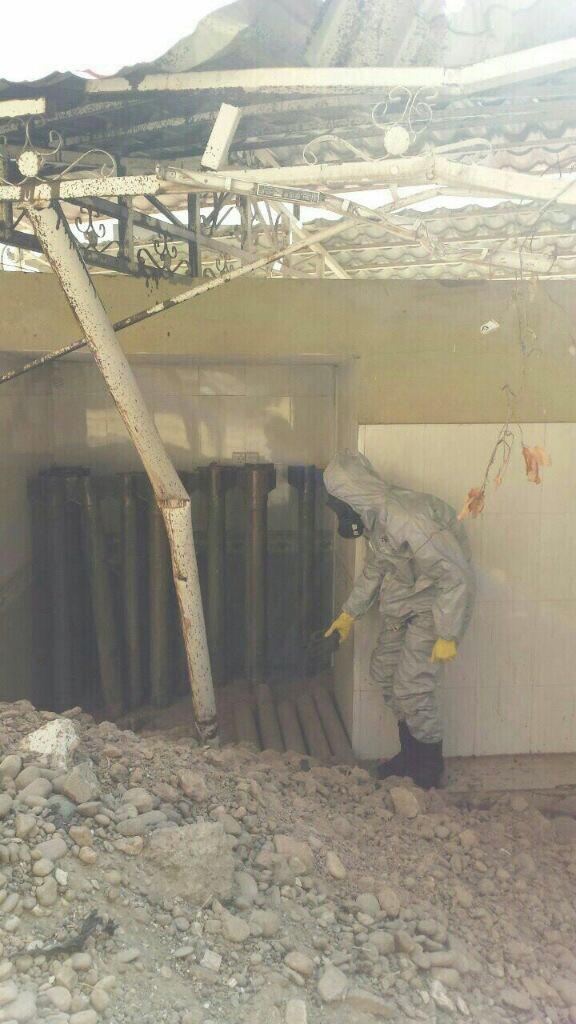Iraqi troops have captured a cache of chemical weapons that formerly belonged to the ISIS terrorist group in Qayyarah, Iraq, just east of the terrorist organization’s stronghold in Mosul.
Photographs taken in mid-October of the weapons along with chemical readings from the stockpile of weapons were provided to Epoch Times by Ed Alexander, chief intelligence officer at BLACKOPS Cyber, a private intelligence company, who in turn received them from his ground team.
Sources from on the ground claimed the weapons were used for mustard gas, and readings showed residue of the chemical in the area. The BLACKOPS Cyber ground team was guarding the weapons until coalition forces could secure them.

A man in a protective suit investigates a chemical weapons cache, captured in mid-October from ISIS in Qayyarah, Iraq. BLACKOPS Cyber





